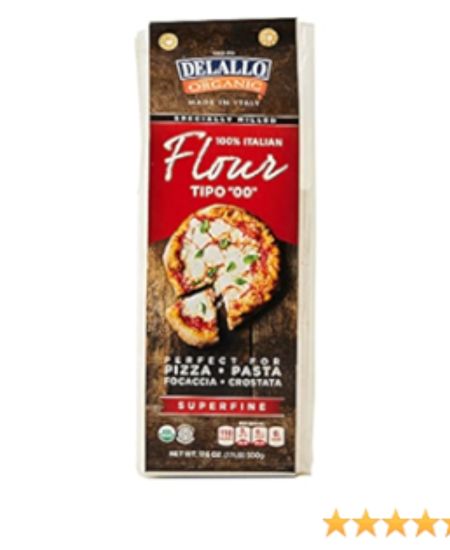Trader Joe’s pizza dough has varied nutrition facts, but a serving typically contains around 160-220 calories and 35-45 grams of carbohydrates. Trader Joe’s offers plain, garlic & herb, and almost whole wheat pizza dough options, making it flexible for different dietary preferences.
Additionally, it’s a convenient choice for homemade pizza enthusiasts. Trader Joe’s pizza dough is a versatile and convenient option for making homemade pizzas, allowing you to customize toppings and create a personalized culinary experience in the comfort of your home.
With varied options such as plain, garlic & herb, and almost whole wheat, Trader Joe’s has something to suit different dietary needs and preferences. If you’re looking for quick and easy meal solutions, Trader Joe’s pizza dough is a valuable addition to your kitchen arsenal, providing a base for delicious homemade pizzas with minimal effort.
Breaking Down The Nutrition Labels
Pizza dough is a versatile and delicious option for meals, but understanding its nutrition labels can help you make informed choices. To make the most of your meal planning, let’s delve into the nutrition facts for Trader Joe’s Pizza Dough.
Calories per serving
Calories Per Serving
Trader Joe’s Pizza Dough offers a satisfying taste while keeping calories in check. A single serving typically provides around 120-130 calories, making it a reasonable option for those monitoring calorie intake.
Macronutrient breakdown (carbs, proteins, fats)
Macronutrient Breakdown (carbs, Proteins, Fats)
When it comes to the macro-nutrient breakdown, Trader Joe’s Pizza Dough offers a balanced profile:
- Carbohydrates: Around 22-24g per serving, providing the energy needed for daily activities.
- Proteins: Approximately 3-4g per serving, aiding in muscle repair and growth.
- Fats: Typically 0-1g per serving, offering a minimal amount of fat content.
Sugar and sodium content
Sugar And Sodium Content
Trader Joe’s Pizza Dough maintains a low sugar and sodium content, supporting a balanced diet:
- Sugar: It contains minimal added sugars, contributing to its health-conscious appeal.
- Sodium: With moderate sodium levels per serving, this dough can be enjoyed as part of a balanced diet.
Dietary Benefits Beyond The Label
When it comes to evaluating the nutritional value of Trader Joe’s pizza dough, it’s essential to consider the dietary benefits beyond the label. While the nutrition facts provide valuable information, understanding the whole grain options available, the presence of any artificial additives, and how it compares to typical pizza dough nutrition can offer a more comprehensive perspective on the pizza dough’s health benefits. Let’s delve into how these factors contribute to the overall dietary advantages of Trader Joe’s pizza dough.
Whole Grain Options Available
Trader Joe’s pizza dough offers whole grain options that provide additional dietary benefits. Whole grains contain the entire grain kernel, including the bran, germ, and endosperm, which are rich in nutrients like fiber, B vitamins, and minerals. When compared to refined grains, whole grains offer enhanced nutritional value, making Trader Joe’s whole-grain pizza dough a favorable choice for individuals seeking a more nutrient-dense option.
Presence Of Any Artificial Additives
Trader Joe’s pizza dough is known for its commitment to using high-quality ingredients, and this extends to the absence of artificial additives. The dough refrains from incorporating artificial flavors, preservatives, or colors, aligning with the preferences of consumers seeking natural and minimally processed food options. By choosing Trader Joe’s pizza dough, individuals can enjoy the inherent taste and benefits of a product that’s free from unwanted artificial additives.
Comparison To Typical Pizza Dough Nutrition
When comparing the nutrition of Trader Joe’s pizza dough to typical options available in the market, it stands out for its balanced nutritional profile. With attention given to factors such as calorie count, fat content, and sodium levels, Trader Joe’s pizza dough maintains a healthier composition, offering a more wholesome alternative without compromising on taste and texture. This comparison underscores the dietary advantage of choosing Trader Joe’s pizza dough as part of a balanced and health-conscious diet.
Customization For Healthier Pizzas
Trader Joe’s pizza dough offers a versatile base for creating delicious and customizable pizzas that can be tailored to fit a healthier lifestyle. By making mindful choices about toppings and serving sizes, it’s easy to transform your pizza into a balanced and nutritious meal. Whether you’re watching your caloric intake or looking to increase your vegetable consumption, there are various strategies you can employ to optimize the nutritional value of your homemade pizza.
Topping Suggestions For A Balanced Meal
When assembling your pizza, consider incorporating a diverse array of toppings to ensure a well-rounded and nutritious meal. Opt for lean proteins such as grilled chicken or turkey sausage, and add abundant veggies such as bell peppers, spinach, tomatoes, and onions to boost the fiber and nutrient content. Additionally, including healthy fats like avocado or a drizzle of olive oil can add richness and flavor to your pizza without compromising on nutrition.
Optimal Serving Sizes For Caloric Control
Managing portion sizes is essential for caloric control when enjoying pizza. Be mindful of the serving sizes to prevent overindulgence. Opt for a single serving of 1/6th of the pizza to maintain a moderate calorie intake. This allows you to savor your pizza while keeping your portions in check, making it easier to adhere to your dietary goals.
Strategies For Incorporating More Vegetables
Increasing the vegetable content of your pizza is a simple way to enhance its nutritional profile. Consider creating a colorful medley of veggies, such as roasted zucchini, mushrooms, and kale as flavorful and nutritious toppings. Alternatively, blend chopped vegetables into the pizza sauce or use them as a base in place of traditional cheese for a delicious and nutrient-packed alternative.
Special Varieties Of Trader Joe’s Dough
When it comes to creating a delicious and satisfying homemade pizza, the type of dough you use can make a significant impact on both taste and nutrition. Trader Joe’s offers a variety of pizza dough options, including special varieties that can elevate your pizza-making experience. In this article, we will delve into the special varieties of Trader Joe’s pizza dough, including the Garlic & Herb and Almost Whole Wheat versions, and provide a comparative nutrition analysis of these different flavors.
Garlic & Herb
Trader Joe’s Garlic and herb pizza dough adds a flavorful twist to your pizza creation. This dough is infused with rich garlic and aromatic herbs, providing a delightful flavor profile that complements a wide range of toppings.
Almost Whole Wheat
For those seeking a healthier alternative, Trader Joe’s Almost Whole Wheat pizza dough offers a compromise between traditional and whole wheat options. With a nutty taste and hint of sweetness, this dough provides a nutritious foundation for your pizza.
Comparative Nutrition Analysis
Below is a comparative table outlining the key nutritional components of the Garlic and herb and Almost Whole Wheat pizza dough options:
| Calories | Total Fat (g) | Carbohydrates (g) | Protein (g) | |
|---|---|---|---|---|
| Garlic & Herb | 160 | 2 | 32 | 6 |
| Almost Whole Wheat | 150 | 1.5 | 28 | 6 |
Pairing With Healthy Toppings
Here are some nutritious and delicious topping ideas that pair well with each type of pizza dough:
Garlic & Herb:
- Fresh tomatoes
- Spinach
- Grilled chicken
Almost Whole Wheat:
- Roasted vegetables (e.g., bell peppers, zucchini, and onions)
- Arugula
- Lean turkey sausage
Practical Tips Using Trader Joe’s Pizza Dough
Trader Joe’s pizza dough offers a convenient way to whip up a delicious homemade pizza. With a few practical tips, you can make the most of this versatile dough. Let’s explore proper storage, thawing, and preparation best practices, as well as cooking times for ideal texture and taste.
Proper Storage For Maximum Freshness
To maintain the freshness of Trader Joe’s pizza dough, it’s essential to store it properly. Keep the dough refrigerated at all times, ideally at a temperature between 33°F and 40°F. Ensure that the packaging is tightly sealed to prevent air exposure and moisture loss, which can lead to the dough drying out.
Thawing And Preparation Best Practices
When planning to use Trader Joe’s pizza dough, it’s crucial to follow proper thawing and preparation techniques. Allow the dough to thaw in the refrigerator overnight for the best results. This gradual thawing process helps maintain the dough’s texture and structure. Once thawed, bring the dough to room temperature before shaping and stretching it into the desired pizza crust. This step ensures that the dough is pliable and easy to work with, resulting in a better end product.
Cooking Times For Ideal Texture And Taste
Achieving the perfect texture and taste when cooking with Trader Joe’s pizza dough relies on understanding the ideal cooking times. For a crispy crust, preheat the oven to 475°F and bake the pizza for about 10-12 minutes or until the crust is golden brown and the toppings are cooked to perfection. Keep an eye on the pizza during the last few minutes of baking to avoid overcooking.

Credit: www.amazon.com
Conclusion
Trader Joe’s pizza dough offers a versatile and healthy choice for homemade pizza. With a variety of options including plain, garlic & herb, and whole wheat, you can adjust the nutrition facts to suit your dietary needs. Explore the possibilities with Trader Joe’s pizza dough for a fulfilling and delicious meal.

As the author of the “Ultimate Pizza Guide: Recipes, Tips & Secrets Revealed,” I’m dedicated to sharing my love for pizza and empowering others to create delicious homemade pizzas with ease. Join me on a journey to uncover the secrets to perfecting your pizza game!



